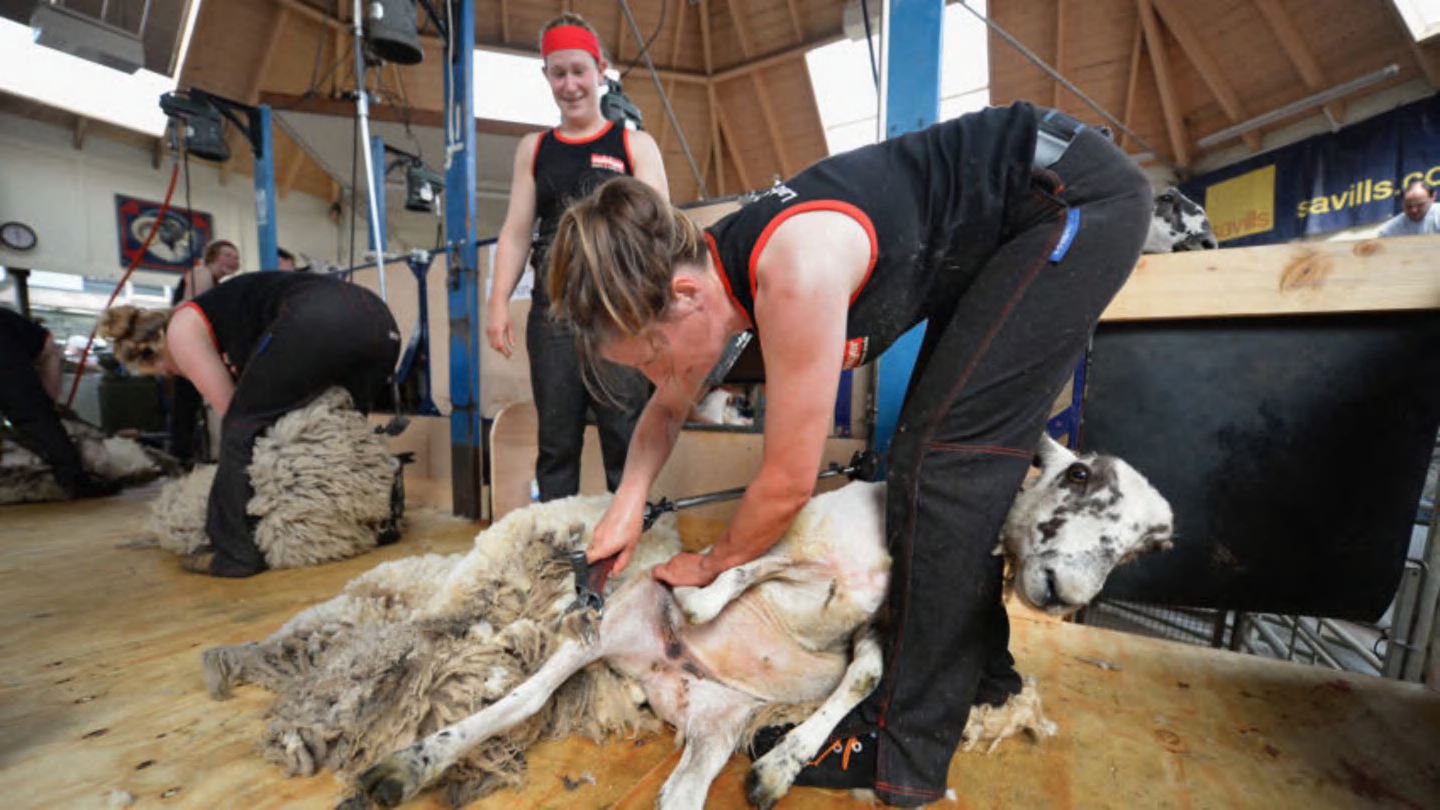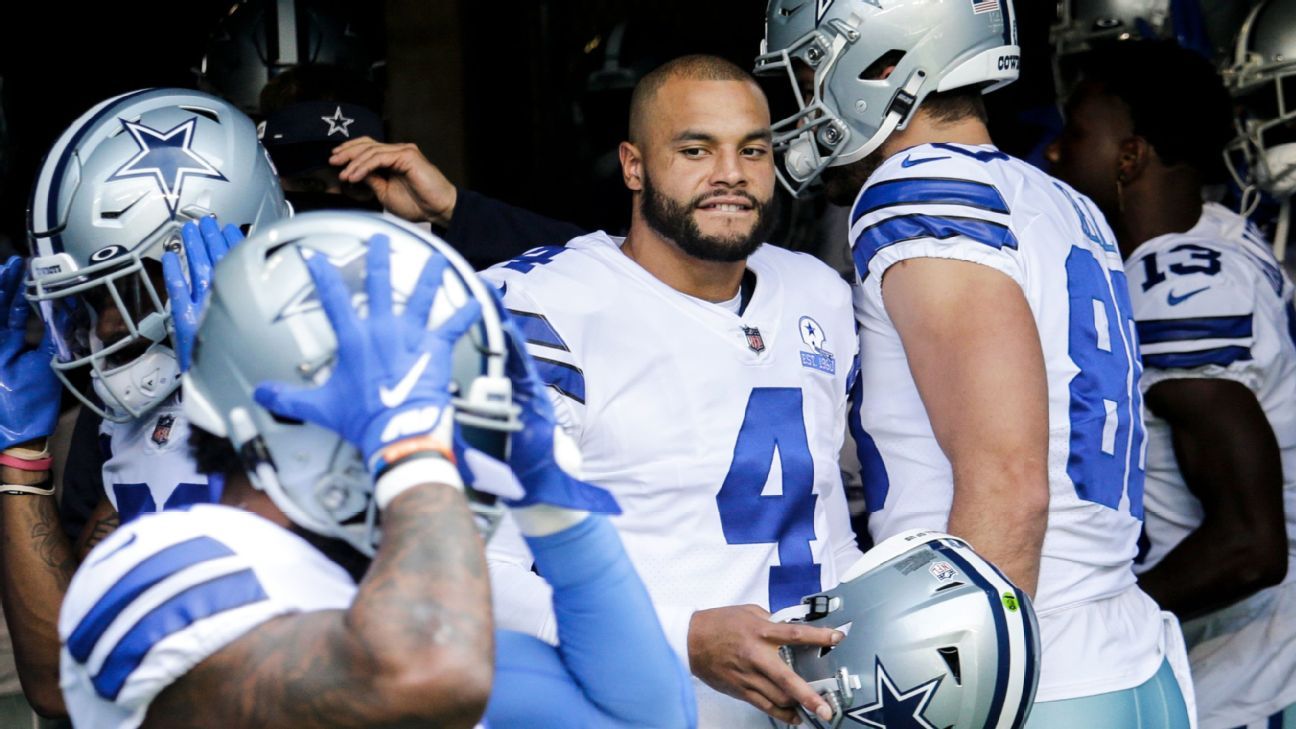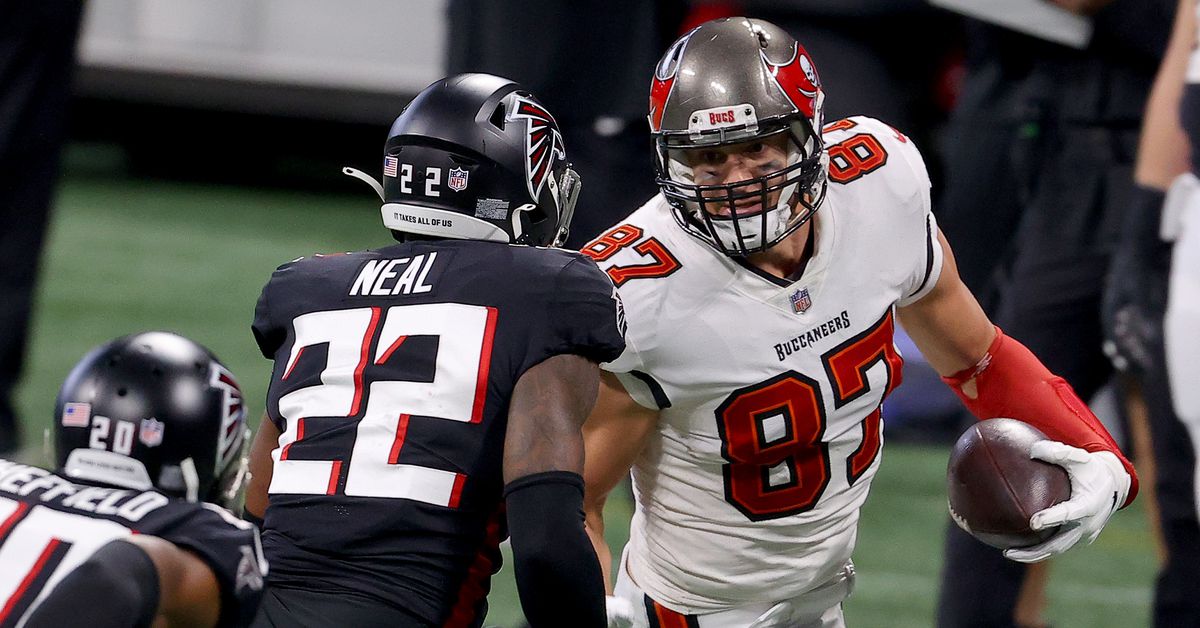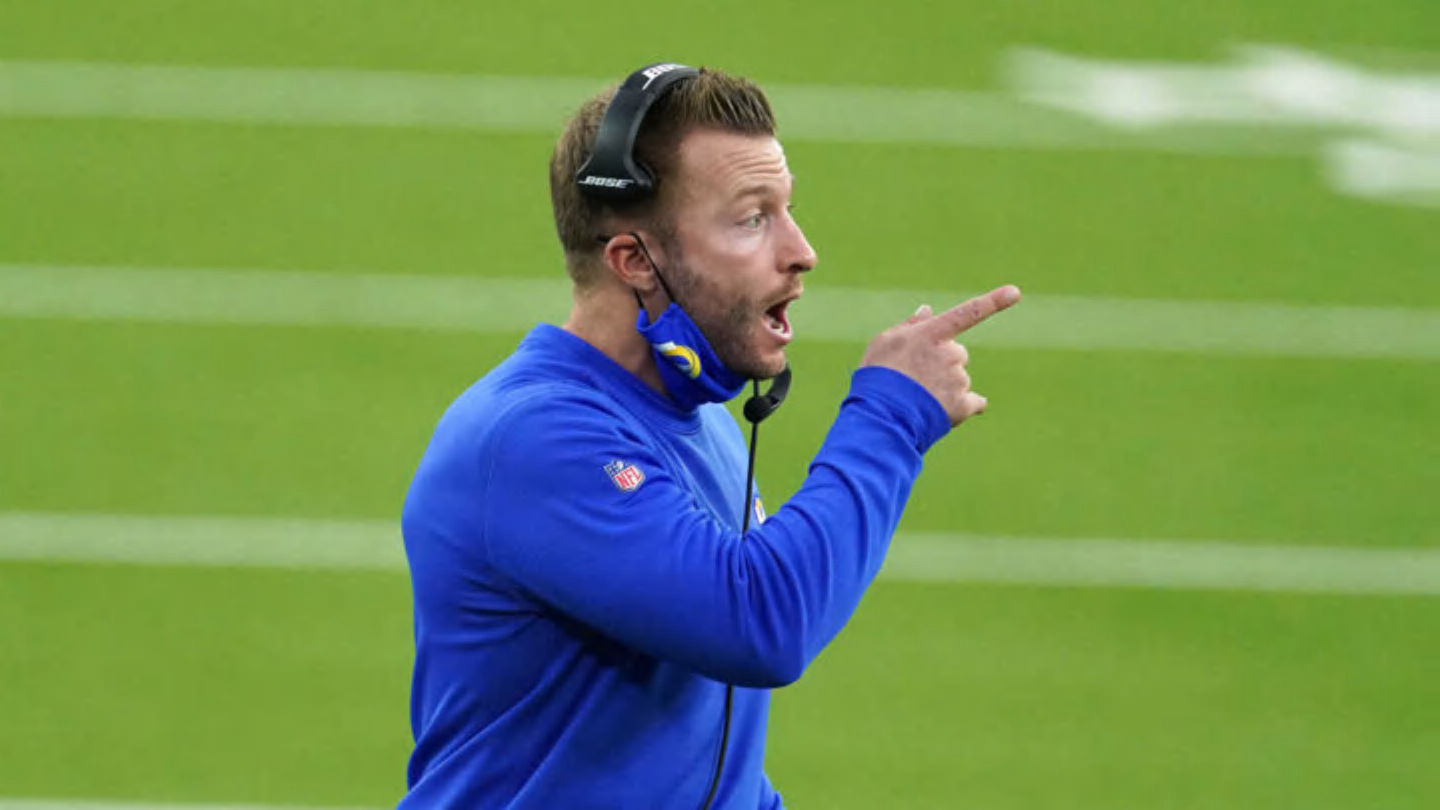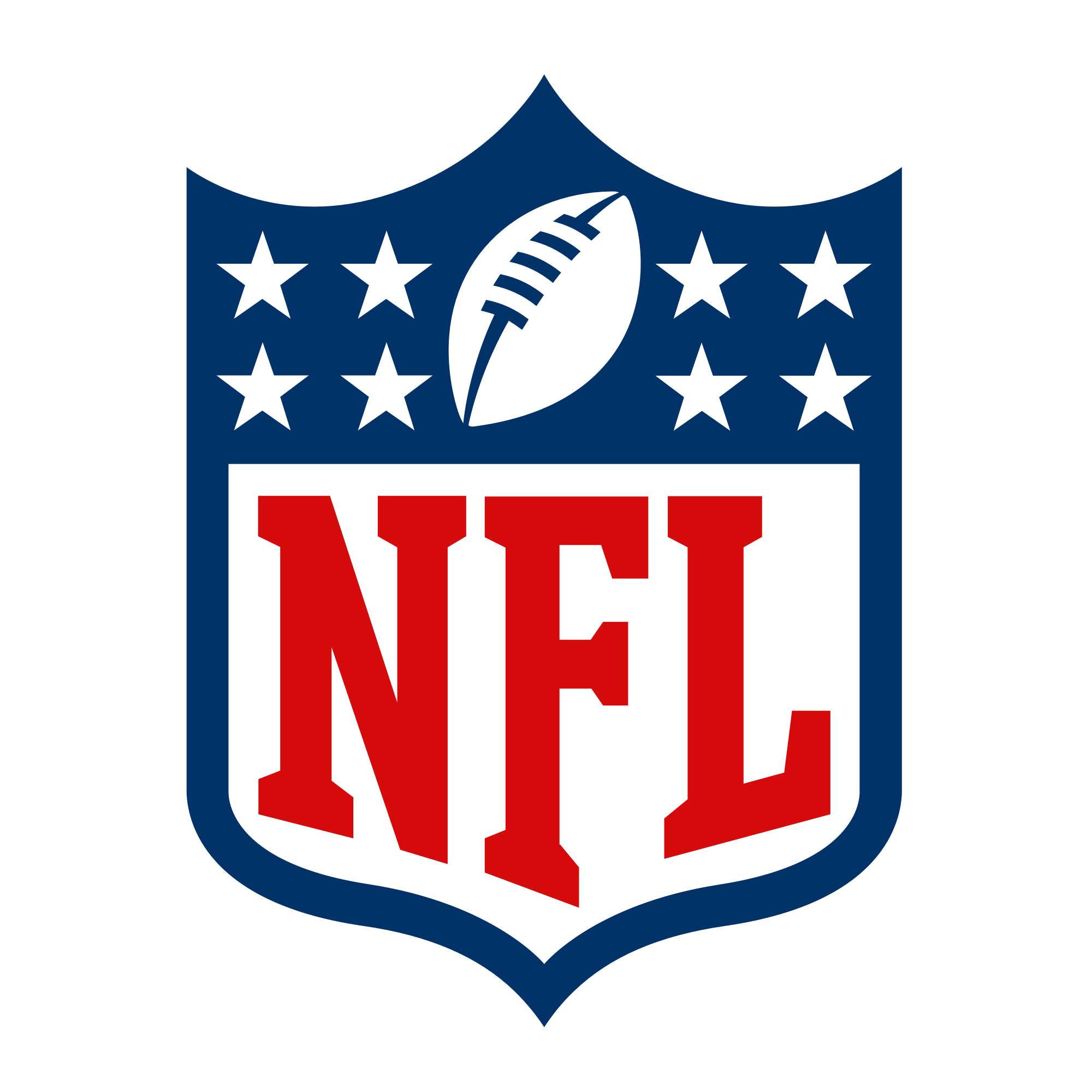12 names who could wind up in the NFC West this year
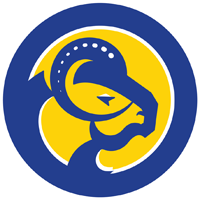
www.turfshowtimes.com
Will any other key players enter the NFC West arms race this year?
12 names who could wind up in the NFC West this year
Well, this was a project I didn’t expect to become this exhaustive.
If you think the NFC East is doomed to be the NFL’s worst division next year, you’re ignoring a part of history. A part of recent “local” history, no less.
In 2011, the San Francisco 49ers won the NFC West with a 13-3 record and the division ended up no worse off than any of the other seven. The Niners even fell three points shy of reaching the Super Bowl just one season after going 6-10 in the final year of Mike Singletary. But Singletary wasn’t far off from winning the division in 2010, as the Seattle Seahawks overcame the St. Louis Rams in Week 17 of that season to take the West at 7-9.
Similar to the 2020 Philadelphia Eagles, the last place Arizona Cardinals were 5-11 and not far out of a trip to the postseason either. But then a switch flipped in 2011 with the 49ers and over the next decade we’ve seen all four teams throw jabs, land elite veteran stars, reach the NFC Championship, and three have made it to the Super Bowl.
The latest of those moves was the LA Rams acquiring quarterback Matthew Stafford. Despite a lack of cap space across the league — and a dearth of money and draft picks for LA and Seattle — I don’t expect the fighting for talent to stop.
In 2012, the rivalry between the 49ers and Seahawks began to heat with the draft selections of Russell Wilson and Bobby Wagner by Seattle (only months after trading for Marshawn Lynch) against four first-team all-pros and six Pro Bowlers on San Francisco’s defense alone. The Niners reached the Super Bowl that season.
In 2013, the Seahawks acquired defensive ends Michael Bennett and Cliff Avril and that helped them beat the 49ers — who had acquired Anquan Boldin — for the division, then the NFC Championship game, before defeating the Denver Broncos in the Super Bowl with the help of trade acquisition Percy Harvin.
That same year, the Cardinals hired Bruce Arians and traded for Carson Palmer, leading them to a 10-6 record. As San Francisco unraveled in 2014, Arizona acquired Calais Campbell to set the tone on their defense and they finished 11-5. Seattle reached the Super Bowl for the second time in as many years but let their repeat slip away in the final quarter against the New England Patriots.
Since that loss, the Seahawks have acquired veterans such as Jimmy Graham, Sheldon Richardson, Duane Brown, Eddie Lacy, Quandre Diggs, Jadeveon Clowney, Ezekiel Ansah, and Jamal Adams, but have yet to make it past the divisional round again.
The Cardinals went 13-3 in 2015 and reached the NFC Championship game but the magic had faded by 2016 and acquisitions like Adrian Peterson and Chandler Jones failed to prevent Arians from getting fired and the team going 3-13 under Steve Wilks in 2018. That opened the door for Kyler Murray in 2019, which set the stage for acquiring DeAndre Hopkins in 2020, but will Arizona be able to attract any more stars to the desert this offseason?
While the 49ers were shuffling coaches for a few years, they mostly acquired what talent they had through the draft. Then after hiring Kyle Shanahan and John Lynch in 2017, San Francisco got aggressive again, trading for Jimmy Garoppolo midseason. The Niners have mostly built through the draft, but also added Richard Sherman in 2019, then Trent Williams and Jason Verrett in 2020. All three, plusGaroppolo, could be leaving in 2021.
How will the 49ers choose to answer?
Finally, the Rams, who once they moved to Los Angeles would prove to be the most eager to enter the arms race after years of being dormant.
After trading up for Jared Goff in 2016, the Rams hired Sean McVay and opened their wallets for whatever he needed. That included Andrew Whitworth, Robert Woods, and Sammy Watkins in the first year. Brandin Cooks, Ndamukong Suh, Dante Fowler, Marcus Peters, and Aqib Talib as LA made the Super Bowl in year two. Then Jalen Ramsey, Clay Matthews, and Eric Weddle in year three.
The Rams had little choice but to be quiet in 2020 — other than the players they were shedding — and still managed to add Leonard Floyd. Now year five begins with the acquisition of a new franchise quarterback.
Are there any deals left to be had?
Of course, this is the NFC West and it’s not the 2000s anymore.
I wanted to see which connections made the most sense between NFC West teams and prospective free agents / trade targets on the market. That first required knowing the financial situations for all four teams, their needs, and the players who would be available.
That’s when I started connecting the dots.
There are so many variables that I can’t know or simply overlooked and the idea of “accuracy” with this piece that should you look back on it in two months you will receive an Alan Partridge-sized laugh (a-ha!) over who ended up where. But that doesn’t mean that it’s “wrong” either.
These are plausible scenarios and they might tell us what could happen — or couldn’t happen — this offseason.
These are 12 free agents/trade acquisitions who I think make sense for the four NFC West teams. But first, in the words of Talking Heads, how did I get here?
These are very rough, don’t bite my head off.
San Francisco 49ers - $169 million in liabilities
Cap savings - Dee Ford ($15.2 million after June 1), Jimmy Garoppolo ($23.6 million, would 49ers restructure if can’t move on?)
Notable Free Agents - LT Trent Williams, CB Richard Sherman, DL Solomon Thomas, S Jaquiski Tartt, FB Kule Juszczyk, CB Jason Verrett
Thoughts: 49ers are not too bad off. At a $182 million cap, cutting Ford after June 1 (he may also have a significant back injury) gives them $28 million in cap space. Propose the idea that the 49ers trade up for a quarterback who they feel confident can contribute next year and I think San Francisco could even get it to $50 million in cap space by releasing Garoppolo.
Top priorities appear to be Trent Williams and the fact that they could literally lose all of their cornerbacks.
Six Needs: QB, EDGE, CB, G, RB, S
Seattle Seahawks - $176.5 million in liabilities
Cap savings - Restructure or Extension-to-Reduce candidates include Carlos Dunlap, Russell Wilson, Jamal Adams, Jarran Reed, and maybe Tyler Lockett, who I think could also be a sleeper trade chip ($12.7 million in savings, if traded). Duane Brown ($11 million, if released or retires) and Tre Flowers ($2 million).
Notable Free Agents - RB Chris Carson, LB KJ Wright, DE Benson Mayowa, C Ethan Pocic, CB Shaquill Griffin
Seattle should be able to bring down the 2021 salary hit for Adams ($9.8 million) maybe a couple others, getting them some wiggle room. But if Wilson really wants the Seahawks to upgrade his offensive line, then he’ll need to bring down his number too. It’s hard to say where Seattle ends up but I would guess that they continue to remain mild in free agency and wait to see if a big name pops up as available later in the offseason.
Six Needs: C, RB, CB, TE, G, WR
Arizona Cardinals - $172.5 million in liabilities
Cap savings - G Justin Pugh ($9.1 million, post-June 1), CB Robert Alford ($7.5 million), LB Jordan Hicks ($3.5 million), DE Devon Kennard ($4.1 million). Restructure LT DJ Humphries could create savings
Notable Free Agents - CB Patrick Peterson, WR Larry Fitzgerald, RB Kenyan Drake, LB Haason Reddick, K Zane Gonzalez, P Andy Lee, OT Kelvin Beachum
I think Arizona could create enough cap space to make a couple of big free agent moves, even without releasing Pugh, which I’m sure will be seen as “unlikely” by some. Fair. DeAndre Hopkins is attempting to woo J.J. Watt to the Cardinals. Players might see Kyler Murray as an exciting quarterback to be on a team with right now. Arizona hasn’t been shy about making big offseason additions under general manager Steve Keim.
Six Needs: CB, WR, K/P, RB, C, TE
I’m really focusing on the other three NFC West teams, but now I assume you’ll wanna see the Rams in comparison to them.
Los Angeles Rams - $212 million in liabilities (before Jared Goff trade)
Cap savings - If they restructure Matthew Stafford’s contract, it should save the Rams roughly $7 million from the above figure. Other obvious restructure candidates include Aaron Donald ($14.2 million in savings) and Jalen Ramsey ($13.2 million), while Robert Woods ($9.1 million), Cooper Kupp ($8 million) could also be considered. Rob Havenstein ($6.75 million, post-June 1) is the most obvious cap casualty candidate, and Andrew Whitworth might be a consideration too ($7 million, post-June 1), while a few other smaller deals will still save several million.
Notable Free Agents - S John Johnson, CB Troy Hill, LB Leonard Floyd, DE Morgan Fox, C Austin Blythe, WR Josh Reynolds, TE Gerald Everett, RB Malcolm Brown
Though the first reaction is that the Rams are in “such worse shape” than the other three teams, you get nearly $35 million in savings from only three obvious moves. Those three moves essentially put Seattle and LA with the same amount of liabilities. One or two more and it wouldn’t be long before the Rams had the most cap room, though the 49ers might end up running away with it — and also having the most needs.
Six Needs: C, G, OT, LB, CB, DE
What would the NFC West teams be fighting over?
Cornerbacks
It appears as though every other team in the NFC West is losing (a lot) of cornerbacks and the Rams are the only one of them assured to have a great one next season. But LA could also lose Troy Hill and Darious Williams is a restricted free agent, so signing a corner won’t be surprising for LA. Even if it is probably a mid or low-tier option.
The other three NFC West teams can’t afford to not go after starting corners.
Centers
LA and Seattle both have starting centers set to be free agents (and may want upgrades anyway) while San Francisco’s Weston Richburg has injury concerns and could become a cap casualty. The Cardinals could also choose to replace Mason Cole. All four teams could have new centers next season.
Guards
Every team could use interior offensive line help, especially in a division with a high number of Pro Bowl caliber defensive linemen, as well as pass rushers from linebacker and safety.
Edge Rushers
There’s nothing unexpected about teams adding pass rushers but it is a greater need than usual in the NFC West. The 49ers could release Ford and lack depth as is. The Seahawks added Carlos Dunlap last season but their other options under contract are former first round disappointment L.J. Collier and two 2020 draftees, second rounder Darrell Taylor (missed last season with injury) and fifth rounder Alton Robinson.
The Cardinals could lose Haason Reddick and Markus Golden this year, leaving Chandler Jones as the only player who has had productive pass rushing seasons but he’s also being mentioned as a potential cap casualty. The Rams are expected to lose linebacker Leonard Floyd and potentially defensive end Morgan Fox, the players ranked second and third in sacks on the team last season.
Running Backs
Cam Akers could be the best running back in the division already. Seattle isn’t expected to re-sign Chris Carson, leaving Rashaad Penny and DeeJay Dallas at the top of their current depth chart. Kenyan Drake is a free agent in Arizona. Raheem Mostert is very talented, but is unreliable due to injuries and Kyle Shanahan needs his offense to have a strong running game and high quality running back. I don’t expect Penny, Chase Edmonds, Mostert, and Akers to be the starting four backs in the NFC West next season. I expect Akers to be, but even LA could entertain a significant upgrade over Malcolm Brown, who is a free agent.
What key players could enter the NFC West this offseason?
Quarterbacks: None
The only team that has a quarterback need is the 49ers and for now they’re acting as though they don’t have a dire quarterback need. There is only one starting caliber quarterback upgrade on the free agent market and I haven’t heard a single person act as though Dak Prescott is leaving the Dallas Cowboys. So I won’t either.
I also don’t think that the Houston Texans will trade Deshaun Watson.
It’s possible that the 49ers will acquire a “name” quarterback to compete with or in some cases replace Garoppolo, such as Marcus Mariota (in trade) or Cam Newton or Mitchell Trubisky or Sam Darnold (trade) but I can’t envision any key quarterbacks entering the NFC West unless it comes via the draft, which seems like San Francisco’s best avenue towards an upgrade.
Running Backs
Aaron Jones, Leonard Fournette
Potential trade, release candidates: David Johnson
Potential Fits: Seahawks, 49ers
I’m only looking at players who could enter the NFC West, so I’m not looking at free agents like Chris Carson or Kenyan Drake for this exercise. I expect Arizona to try hard to retain Drake, but if he does leave, I’m not sure Jones or Fournette would fit the same needs.
Will teams view Fournette as a starting back again? During his last season with the Jaguars, he had 1,152 rushing yards and 522 receiving yards with one fumble. In four playoff games with the Bucs last year, he had 300 rushing yards, 148 receiving yards, and four touchdowns.
I wonder if a team like Seattle will attempt to lure Fournette in with the promise of making him a featured back for Shane Waldron. But if he’s not respected to that degree, then I think it’s possible that a team like the Rams would like to offer him a complementary role behind Akers.
The 49ers seem like a team anxious to get in the mix for running backs again, so I could see them making a play for Drake or poking around the Aaron Jones negotiations.
Wide Receivers
There may not be a great need for receivers in the NFC West, outside of the Cardinals attempting to find a single threat that isn’t DeAndre Hopkins. It depends on whether or not Seattle, San Francisco, or Los Angeles would feel more comfortable with a new veteran. I don’t expect Chris Godwin or Allen Robinson or JuJu Smith-Schuster to enter the NFC West, if they’re even allowed to test the market. But a second tier name could pop up and at least a few from the third tier sure will.
Which isn’t always bad. The third tier often out-values the first, relative to their contracts.
Corey Davis, TY Hilton, Marvin Jones, Sammy Watkins, Keelan Cole, A.J. Green
Potential trade, release candidates: D.J. Chark, Jamison Crowder, Mike Williams
Potential Fits: All
Just a note: these lists aren’t comprehensive. I’m choosing names. I guess go ahead and throw that blame at me for what names I chose or didn’t choose. Is it possible I overlooked somebody though? Of course.
Any team could add one of these players, even if none of these players are considered game-changers in 2021. Those considerations could be wrong. These are good players. Davis might even be a great player and the only team I could see trying to pay a great receiver is Arizona. It would be a lot of money to their top two wideouts but what’s the point of a rookie-contract quarterback if you don’t spend the savings around him?
Jones has a Matthew Stafford connection but would need to join him by probable leaving some money on the table. I could see Green using this opportunity to resurrect his career by playing with a great passer, so the Rams and Seahawks could be on his list. However, it is also possible that he can’t resurrect his career.
I’d also look for a potential divorce of the Chargers and Mike Williams. He could bring an interesting element to the Rams or Cardinals.
Tight Ends
Hunter Henry, Jonnu Smith
Potential trade candidates: Zach Ertz
Potential fits: Seahawks, Cardinals
It’s already been rumored that Seattle is looking into the availability of Ertz. If they don’t land him, it’s possible that the Seahawks would be aggressive in a pursuit of a free agent but they typically don’t do that. Even a player like Smith could be too popular for them to give it serious thought. But trading for Ertz is within general manager John Schneider’s typical line of thinking.
Arizona lacks a weapon outside of Hopkins and someone like Smith might excel with greater opportunity for targets than what he had in Tennessee. There will be plenty of those with the Cardinals and Murray will benefit from more intermediate-area talents.
Offensive Tackles
I can’t completely rule out that one of the teams will acquire a notable tackle but given the lack of it as a priority in 2021 and the length of this article already, I am going to rule it out.
Guards
Joe Thuney, Brandon Scherff
Potential Fits: All
I think my job is easier here because there are so few “star” guards and that’s also why those players are rarely available. The only NFC West team that I see as “the type” to make a play for Thuney or Scherff at $15 million+ per season is the 49ers. But given how things have played out, I don’t think San Francisco is going to do that this year. Unless later by the end of the article I’ve changed my mind.
Centers
Alex Mack, Corey Linsley, David Andrews
Potential Fits: Los Angeles, Seattle
Yes, Mack could choose to play for the Rams or Seahawks as a chance to compete in the NFC before he retires. My guess is that every notable center re-signs with his current team. And by “every notable center” I mean Linsley.
These teams will have to fight it out for their own players, rookies, and third tier options.
Edge Rushers
Shaquil Barrett, JJ Watt, Carl Lawson, Yannick Ngakoue, Trey Hendrickson, Matt Judon, Aldon Smith
Potential trade, release candidates: Von Miller, Brandon Graham, Preston Smith, Dante Fowler
Potential Fits: All
I mentioned how great the need is in the NFC West for edge rushers and that’s before accounting for the potential losses within the division.
I’ve laid out my reasons for why the Rams would be a great fit for J.J. Watt. I’m not sure if he agrees with me. Watt may also interest Seattle, San Francisco, and Arizona. I don’t quite see a connection between Watt and a team that wasn’t close to the Super Bowl last year with reasons to believe they’re improving. That keeps the Rams on the radar for me.
The 49ers may need to go the route of bargain edge rushers if they plan to release Ford, lest they just end up acquiring another Ford. Maybe a player like Melvin Ingram or Haason Reddick would make more financial sense.
Shaquil Barrett feels like a Cardinals linebacker if Tampa Bay can’t hang onto him. Pete Carroll wouldn’t be shy about signing Aldon Smith. Could the Rams entertain a Fowler reunion at a much lower cost than his value a year ago?
Even for the teams that don’t end up with any of the names above, it’s going to be another deep pool of quality depth pieces and it’s probable that at least one or two will be massive bargains while some of the expensive players will be disappointments. Names like Denico Autry, Kerry Hyder, Ingram, Bud Dupree, Reddick, Romeo Okwara, and Tyus Bowser.
Defensive Tackles
Unless a team in the division signs Leonard Williams, I don’t see a notable move coming at defensive tackle.
Linebackers
The Rams and Cardinals are only teams that have anything even resembling a significant need at linebacker, but either of those teams could probably get by without making notable moves at the position.
Lavonte David, Matt Milano, Jayon Brown
If we assume that the Cardinals don’t release Jones or Kennard or Hicks, then their need isn’t that great. I just prefer connecting them to Barrett rather than David. I don’t see LA going after any of these linebackers. But possibly another key veteran like K.J. Wright would be open to making the move south from Seattle and vice versa they would welcome him.
Cornerbacks
Desmond King, William Jackson, Xavier Rhodes
Potential trade, release candidates: Kyle Fuller, Stephon Gilmore, Casey Hayward, Desmond Trufant
Potential fits: Seahawks, 49ers, Cardinals, aaaand Rams
I wrote on Thursday that there is an upcoming cornerbacks showdown in the NFC West. There aren’t many notable names hitting the free agent market and probably nobody I could call a “star” cornerback. Certainly a player like Fuller can make a difference on a defense, as can all of these players with the exception of maybe Trufant, who might get connected to the Rams anyway because of Raheem Morris.
Some of the biggest names hitting the market, like Richard Sherman, Patrick Peterson, Jason Verrett, Shaquill Griffin, Quinton Dunbar, Troy Hill, are of course already in the NFC West. And it appears that most of them will shuffle around.
The 49ers could replace one former star with another former star by acquiring Gilmore. They have a trade history with Bill Belichick. The Cardinals might try to make a big move because they have a terrifying state of affairs with Byron Murphy as their last corner standing. I could see Vance Joseph having interest in Jackson. The Seahawks will likely favor the option of keeping Griffin and Dunbar and if that fails at all, signing third tier free agent corners.
The Rams don’t have as dire of a need here but could take interest in someone like Trufant because he was still well playing prior to a 2019 injury. Some corners, like Rhodes and Verrett and Hayward, were in similar positions to Trufant prior to a career resurgence.
Safeties
Justin Simmons, Anthony Harris, Marcus Williams, Marcus Maye
The Rams could lose John Johnson, but have depth. The 49ers could be looking for safety help, but it’s not a high priority. The acquisition of a high-profile safety from outside of the division seems unnecessary.
But much like the Trufant connection, Morris’s presence could attract free agent Keanu Neal towards LA and if that happens, the Rams would be adding a valuable safety, when healthy.
So what happens?
I think the Cardinals and 49ers will be able to spend the most money and I expect San Francisco to make notable, yet subtle veteran additions. Arizona’s signings will be costlier and make bigger headlines but have they figured it all out as an organization yet? Or are they just signing players for the sake of it?
I have the Seahawks adding two big names but they aren’t necessarily reliable additions under anything less than the best of circumstances. And I’ve connected the Rams to four players and while I’m sure they’ll draw “hos” and “hums,” Los Angeles doesn’t have a lot of money to spend. And one of the players is actually quite notable, even if nobody agrees with me.
12 Projected NFC West Acquisitions Of Note!!!
Cardinals sign WR Corey Davis
Cardinals sign EDGE Shaquil Barrett
Cardinals sign CB William Jackson
Seahawks sign RB Leonard Fournette
Seahawks sign DL Aldon Smith
49ers sign G Brandon Scherff
49ers sign EDGE Melvin Ingram
49ers trade for CB Stephon Gilmore
Rams sign WR Marvin Jones
Rams sign CB Desmond Trufant
Rams sign S Keanu Neal
Rams sign DE J.J. Watt
I understand why some people might be underwhelmed with this Rams haul, but keep in mind that a) it doesn’t include Stafford, b) I think this is pretty good when you consider how little LA has to work with, c) all four would probably take less to play with Stafford and/or Morris on these make-believe deals, and d) if Neal and Watt are healthy, I’d say it is actually a massive haul.
San Francisco and Arizona appear to do the best, as they should, given they had first round picks and more cap space to work with. But would those moves — in addition to others — make them better than the Rams? What moves would you have preferred, now that you’ve seen it laid out?
Time to start racing.
